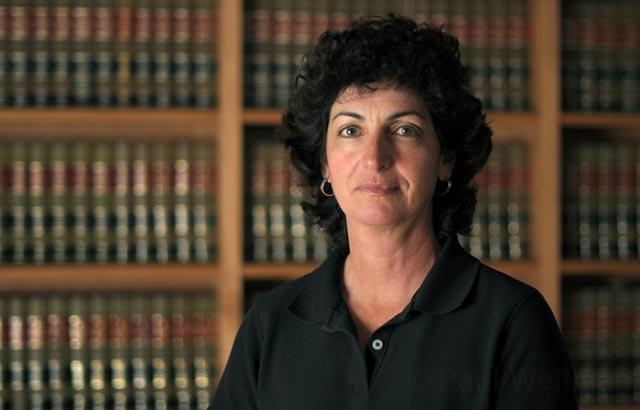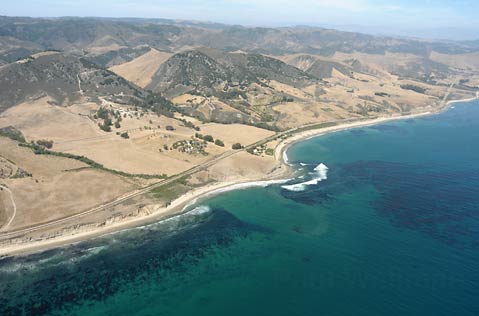County vs. Coastal Commission Debate Goes to School
UCSB Forum Helps Shed Light on Epic Land Use Wrestling Match

The controversial can of worms that is Santa Barbara County versus the California Coastal Commission (CCC) land use debate got yet another — and surprisingly illuminating — kick around this week thanks to the folks from UCSB’s Coastal Fund.
Two weeks removed from the supervisors’ hard-earned decision to tell the CCC and their publicly unpopular land use code recommendations to take a hike, the Associated Students Coastal Fund brought in the county’s Planning and Development honcho Glenn Russell, the Environmental Defense Center’s chief attorney Linda Krop, and rancher Paul Van Leer to discuss the lead-up to and fallout from the supervisors’ vote. Even better, offering something that was glaringly absent from the supes’ multiple deliberations on the topic, Thursday afternoon’s forum also included real, live input from two Coastal Commission staff members, offering their take on the major league messy situation.
With Van Leer playing the part of those opposed to the Coastal Commission’s recommendations, Krop providing the overarching reasons for implementing the suggestions no matter how loud the squeak of the wheel may be against them, and Russell falling somewhere in the middle and essentially working to explain the nut and bolt specifics of the situation, much of the forum was a rehashing of a debate that has raged at the supervisors’ level since last year (and, in some ways, for nearly seven years before that).
Worth noting from the back and forth was Russell’s figuring that “progress [in compromise efforts between the county and the CCC] happened every time we talked, including right up until when the supervisors rejected [the set of recommendations],” and that all sides involved remain hopeful that the many years’ worth of work that led up to the currently abandoned county land use code updates will not be wasted. Russell said that a compromise might still be achieved in the months ahead should the supes okay it, and that the February 1 vote to pull the plug on the updating process does indeed open the door for any and all Coastal Development Permits issued by the county — both from the past and going forward — to be appealed by the Coastal Commission or by any member of the general public.

However, it wasn’t until the Coastal Commission’s Sarah Christie, who works as the state agency’s legal liaison, offered her input on the drama that things took a turn toward the previously unrevealed. Hammered hard during supervisors’ hearings by both the public and a few certain supervisors for delivering a “late hit” on the land use code update process via their lengthy and rather demanding list of wants and wishes, Christie took the opportunity to set the record straight about the Commission’s role since the updating process kicked off in 2003.
Explaining that the Commission’s staff was told by the county way back when that the update amounted to little more than a simple — albeit much needed — reformatting of codes and rules that had been in place since the early 1980s, Christie claimed the Commission asked for a simple “matrix” document on the specific codes that would be changed or updated so as to assess the situation before county staff got too deeply into it.
According to Christie, that document never got delivered and thus the stage was set for the late-hour drama that ensued more than a half-decade later when the reformatting was finally submitted for approval. “Santa Barbara went through its long local process but somehow, during that time, this non-substantive reformatting turned into a very substantial series of changes to their land use development codes,” testified Christie before adding, “And when we did finally get the document and went through it line by line, it became very obvious to us that it needed to be reconsidered in order to be in compliance with the Coastal Act.”
Even more damning, Christie — backed up by Commission staffer Shana Gray and, to a certain degree, Russell himself — explained that some of the Commission’s suggested modifications, such as the controversial requirement for a permit to allow certain amounts of grazing land tilling, actually were inspired by the county’s original 1984 land use codes and had already been in place, though mostly unenforced, for nearly three decades.
As Christie explained this, both Krop and 2nd District Supervisor Janet Wolf, who attended the forum as a member of the public and was the lone vote of dissent against the rebuking of the Commission’s suggestions, could be seen nodding their heads in the tell-tale “I told you so” manner.
Currently, there is no specific date set for when the supes will revisit the land use code update efforts. Until then, nearly a decade of hard work and money spent will remain in a useless sort of limbo while simultaneously forcing a reworking of the Isla Vista Master Plan and, to lesser degrees, the Montecito General Plan and the Goleta Design Guidelines. The current state of affairs also means we now have defaulted back to a land use code that, for good or bad, is not in complete compliance with the Coastal Act. “It is definitely a frustration that we have to start over,” explained Russell on Thursday, “but every time we worked on this we got closer [to a resolution], so I still hope and expect that we will get there.”



